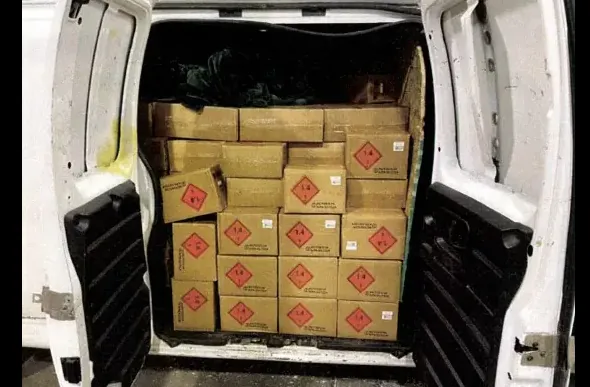Thousands of migrants, fearful of deportation under President Trump, are escaping to Canada, causing an asylum surge not seen in years.
In just the first two weeks of April, at least 1,411 migrants tried crossing from upstate New York into Canada, according to Canadian Border Services Agency data.
That figure already exceeds the 1,356 crossings in March, which was twice the monthly average earlier this year.
Most of those fleeing are Haitian migrants heading toward French-speaking Quebec.
And those numbers only reflect individuals who turn themselves in to Canadian authorities — many more are likely crossing the lightly guarded border undetected.
Unlike during Trump’s first term — when then-Prime Minister Justin Trudeau offered a warm welcome — Canada’s response this time is far more restrained.
“There are limits,” said Prime Minister Mark Carney during a leaders’ debate in Montreal. “We have to be human — but realistic. Canada can’t accept everyone.”
So far in 2025, Canada has returned 1,130 asylum-seekers to the U.S., the highest number in a decade.
The migrant influx follows Trump’s vow to revoke protections for roughly 530,000 migrants from Haiti, Cuba, Nicaragua, and Venezuela, granted legal status by the Biden administration in 2022.
The Department of Homeland Security announced the end of the CHNV parole program, arguing there’s no longer a humanitarian need for its continuation.
Although a federal judge in Boston issued a preliminary injunction to stop the termination, the administration remains defiant.
“While this ruling delays justice and undermines the integrity of our immigration system, Secretary Noem will use every legal option available to end this chaos,” said DHS Assistant Secretary Tricia McLaughlin. She described the CHNV program as “an unlawful scheme to unleash poorly vetted aliens into America.”
Under the Safe Third Country Agreement, migrants arriving through the U.S. generally can’t legally seek asylum in Canada, since both countries are considered safe. Exceptions apply only if the migrant has a close relative who is a Canadian citizen or permanent resident.
In response to the growing crisis, Canadian authorities say they’re ramping up border enforcement and allocating more resources to manage the surge.














